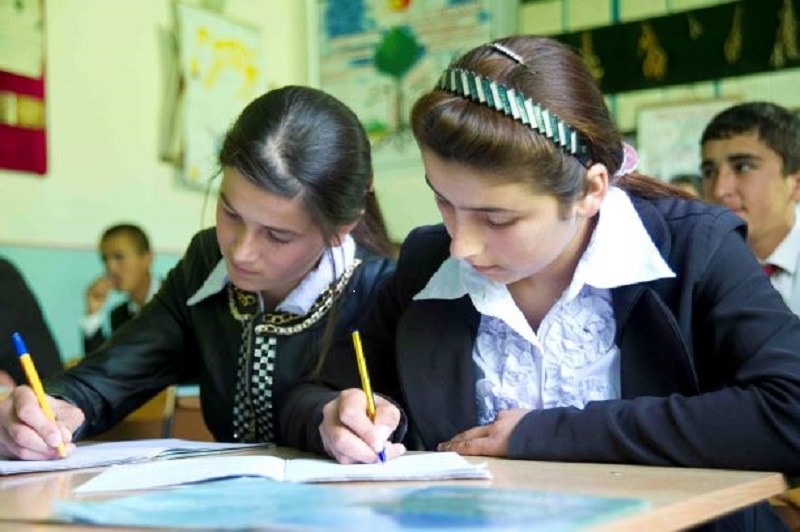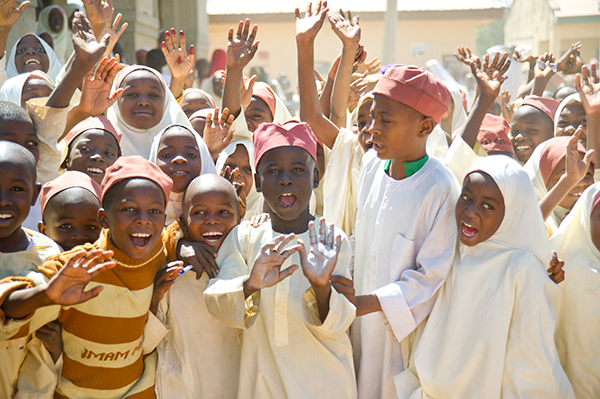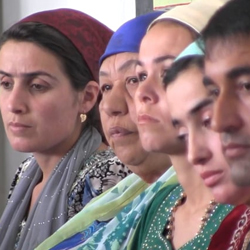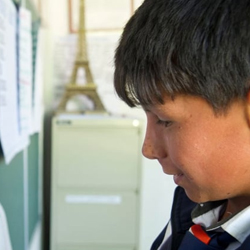Violence against women and girls in Central Asia seems intractable. But I have lived and worked there and know that it isn’t. There are solutions.
Several years ago, I had a great opportunity to volunteer as a Monitoring and Evaluation Advisor with CUSO International in Tajikistan. I was placed to work with Preventing Domestic Violence program in Dushanbe, Tajikistan.
Funded by the Swiss Development Agency, the head of the Preventing Domestic Violence office was working with five local organizations in Dushanbe and Khatlon region to address domestic violence and its detrimental effects on women and children. My role was to build the capacity of the partners and develop M&E tools to measure progress of their projects. The work of the partners was not easy; domestic violence is a multifaceted problem.
Domestic violence and violence against women and girls in general are rampant not only in Tajikistan, but throughout the Central Asia region. From bride-kidnapping in Kyrgyzstan, to female suicide in Tajikistan and the insistence that brides be virgins in Uzbekistan, the problem is deeply rooted in the way society sees a woman – as property.
According to UN Women, nearly 30 percent of women in the Kyrgyz Republic and 20 percent of women in Kazakhstan have experienced violence, primarily by their intimate partners. One in five women experience domestic violence in Tajikistan, National statistics are not available for Uzbekistan.

One part of the solution: Safer schools
Although some Central Asian states adopted laws addressing domestic violence, more work needs to be done. One place to begin is to empower girls by keeping them in schools and creating safe school environment for them.
Creative Associates International worked in Tajikistan on Safe Schools Program to prevent violence against women and girls as part of the Quality Learning Project funded by the U.S. Agency for International Development.
The Safe Schools Program was launched in Tajikistan in 2009 in response to growing concerns regarding school safety. Specifically, USAID wanted to address the tolerance of violence toward girls and their early removal from school. Under the program, Creative trained 400 teachers from 20 schools and 400 community counselors in prevention techniques and appropriate responses to violence against women and girls.
Safe Schools was one of the first programs to systematically use a gender approach to understand and then develop interventions to reduce violence against women and girls. This approach addressed the needs of both boys and girls and included identifying the relationship between traditional definitions of gender roles and the types of abuse and violence that young people experience – not only the sexual teasing, harassment and abuse usually directed at girls, but also the bullying and corporal punishment primarily suffered by boys.
Creative found that many Tajik teachers were not considering the responsibilities and pressures girls faced that could be impeding their ability to study. Through the project teachers became better equipped to support girls and make additional efforts to help boost their self-confidence. Program activities helped teachers understand and question the restrictions that traditional gender roles and male/female power dynamics place on students’ behavior and aspirations.
The program also strove to make safe school spaces by strengthening the relationships amongst the schools’ staff, including teachers, nurses and psychologists. At the end of the program, 28,860 students had access to counseling and referral services.
Creative implemented the program around the same time as I was volunteering with CUSO. The Safe Schools Program managed by Creative and the activities of Preventing Domestic Violence partners were significant at the local level.
Holistic approach to the problem
But more work is needed not just in Tajikistan, but throughout Central Asia region.
What can be done to make greater progress?
We need a holistic solution that addresses the lack of psychosocial services, improves police sensitization, ensures appropriate medical services and trained staff. The region needs more resources for hotlines and shelters. Implementing and enforcing laws that protect women and girls must take priority on the agendas of Central Asian states.
Finally, strong monitoring and evaluation systems need to be established to hold service providers accountable, to empower women to demand change, and press governments to act and dedicate more resources to address this epidemic.
It is common to speak of women highly in the region, so let’s practice what we preach.
Nigina Valentini is a Technical Manager for Monitoring and Evaluation at Creative Associates International



